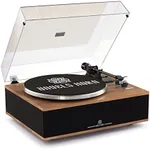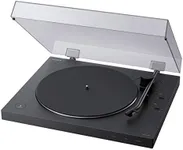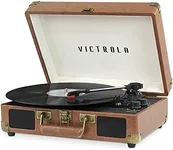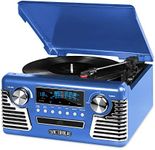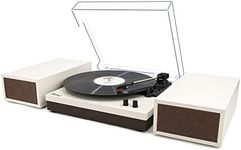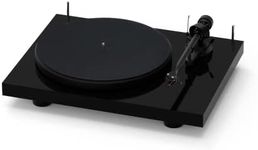Buying Guide for the Best Bluetooth Turntable
Choosing a Bluetooth turntable can be an exciting way to enjoy your vinyl records with the convenience of wireless audio. The key is to balance classic analog sound with modern features that fit your lifestyle. Before you buy, think about where and how you’ll use your turntable, what kind of speakers or headphones you want to connect, and how much you care about sound quality versus ease of use. Understanding the main features will help you pick a turntable that matches your needs and gives you the best listening experience.Bluetooth VersionBluetooth version refers to the generation of Bluetooth technology built into the turntable. Newer versions (like 5.0 and above) offer better range, faster connection, and improved sound quality compared to older versions (like 4.0 or 3.0). If you want a more stable connection and plan to use your turntable in a larger room or farther from your speakers, look for a higher Bluetooth version. For basic, close-range use, even older versions can work fine.
Built-in PreampA built-in preamp boosts the signal from your turntable so it can be played through modern speakers or headphones. Some turntables have this feature, while others require an external preamp. If you want a simple setup and plan to connect directly to powered speakers or Bluetooth devices, a built-in preamp is very helpful. If you already have a stereo system with a phono input or want to customize your sound, you might not need this feature.
Drive Type (Belt vs. Direct Drive)Drive type describes how the turntable’s platter spins. Belt-drive turntables use a rubber belt, which can reduce vibrations and is often preferred for home listening. Direct-drive turntables have the motor directly under the platter, offering more consistent speed and are popular for DJing or frequent use. If you want a quieter, more traditional listening experience, belt-drive is a good choice. If you need durability and quick start/stop, direct-drive might suit you better.
Speed SettingsSpeed settings determine which types of records you can play. Most turntables offer 33 1/3 and 45 RPM speeds, which cover most vinyl records. Some also support 78 RPM for older records. If you only have standard LPs and singles, 33 and 45 RPM are enough. If you collect vintage or specialty records, make sure your turntable supports all the speeds you need.
Cartridge and Stylus QualityThe cartridge and stylus are the parts that read the grooves of your records. Higher quality cartridges and styluses can improve sound clarity and reduce wear on your records. Some turntables come with basic cartridges that can be upgraded later. If you’re just starting out, a standard cartridge is fine, but if you want the best sound or plan to upgrade, check if the turntable allows easy replacement.
Auto-Stop and Auto-Return FeaturesAuto-stop and auto-return features make the turntable stop spinning or return the tonearm to its resting place when a record finishes. These features help protect your records and stylus from unnecessary wear. If you want a more hands-off, user-friendly experience, look for these features. If you prefer manual control or a more traditional feel, you may not need them.
Build Quality and MaterialsBuild quality affects both the durability and sound performance of your turntable. Heavier, well-made turntables with solid materials can reduce vibrations and last longer. Lightweight or plastic models are more portable but may not sound as good or last as long. If you plan to keep your turntable in one place and want the best sound, choose a sturdier model. If you need something easy to move, a lighter build might be better.
